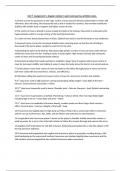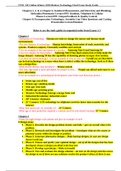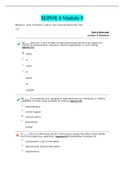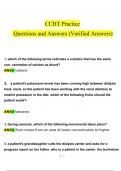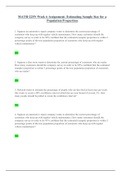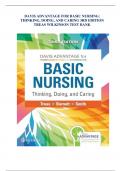1) Centre of mass for gymnasts on the rings. Centre of mass must be directly underneath to remain still
otherwise, they will swing. Not necessarily bad as this is needed for routines. Also mention handstand
stability with smaller base of support and higher centre of mass.
2) The centre of mass is altered to move outside the body in the Fosbury Flop which is achieved by the
hyperextension which is a large arching of the back (demonstrate).
3). Centre of mass above planted foot on kicks. Optimal lean back to not fall forwards or stay stationary.
4) Lowered centre of mass for increased stability when returning shots so that the risk of falling is
decreased if the tennis player needed to reach far for the shot.
5) Extending the spine in the Fosbury Flop allows high jumper’s centre of mass to travel under the bar
whilst they travel over the bar, making it easier to jump higher. High vertical velocity aids raising the
centre of mass and increasing horizontal velocity.
6) Gymnasts broaden their hands and feet to establish a larger base of support with a lower centre of
mass for increased stability and making it easier to keep the body above the feet in an inverted posture.
7) Tennis players move their centre of mass forwards on the follow through phase of serves to hit the
ball more easily with increased force, velocity, and efficiency.
8) Talk about sitting into punches to lower centre of mass for more force transfer and stability.
9) 2nd class lever used in high jump for running and jumping. Body weight = load. Balls of the feet =
fulcrum. Gastrocnemius contraction = effort.
10) 3rd class lever frequently used in tennis. Shoulder joint = fulcrum. Racquet = load. Deltoid contracting
= effort.
11) 1st class lever in gymnastics cartwheel. Planted leg = fulcrum (front, then rear leg). Bodyweight
including legs in the air = load. Body and arms = effort.
12) 1st class lever for headbutts in Burmese boxing, combat sambo and Krav Maga. Neck muscles =
effort. Cervical spine = fulcrum. Weight of the head = load.
13) Transverse axis/sagittal plane in high jump as Fosbury Flop is like a somersault which is extension,
and the run up involves knee, hip, ankle, and toe flexion and extension (or dorsi/plantar).
14) Longitudinal axis/transverse plane in tennis as the player’s shoulder initially externally rotates to
wind up power for a serve, then internally rotates to follow the racquet through and execute the serve.
15) Sagittal axis/frontal plane for side kick in karate, kickboxing and taekwondo as the hips adduct to lift
the leg and move sideways.
16) Transverse and longitudinal axis/sagittal and transverse plane in gymnastics vaulting during a 360-
back handspring as the somersault involves transverse axis rotation/sagittal plane movement and the
360 rotation involves longitudinal axis rotation/transverse plane movement.

